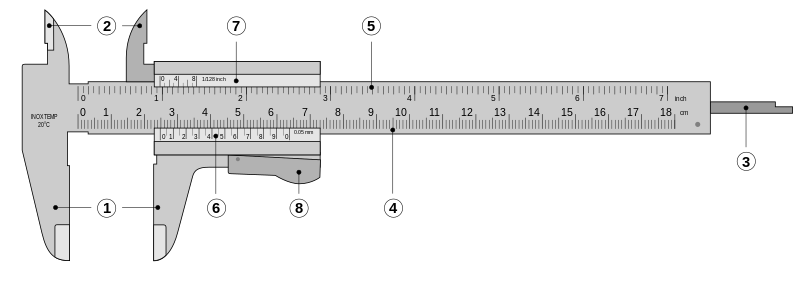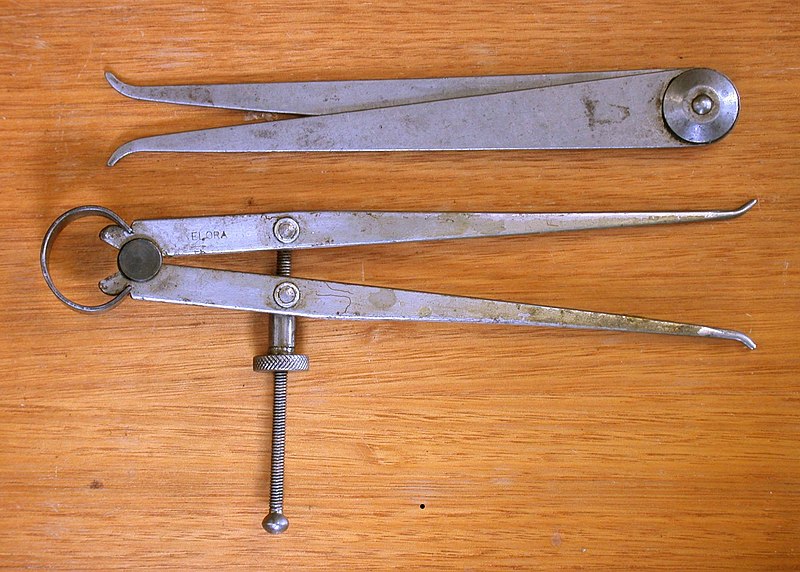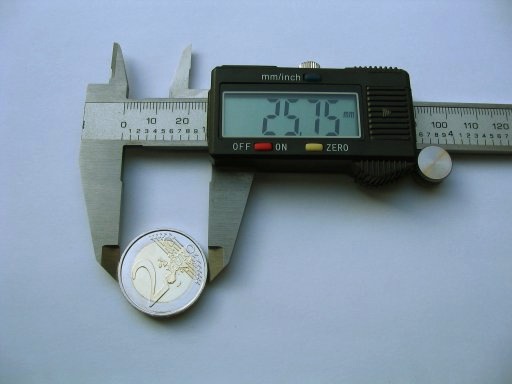now here is a tool you might take for granted, but it tends to be in near constant use!, a quick verification on size of a component can do wonders for your sanity, at times.
ID suggest most mechanics could use a 6-8" version and a 12" version, the cheaper digital versions are reasonably accurate from what Ive seen testing them against my more expensive versions but keep in mind your mikes are for, fine, measurements are taken with your micrometers, or the best quality dial calipers, the cheaper versions are less accurate generally

http://www.harborfreight.com/cpi/ctaf/d ... umber=5043
http://www.starrett.com/pages/74_precis ... suring.cfm
not the caliper, that's usually used to get a real good idea of the ball park measurements when you don,t really need precise , measurements, (altho there are exceptionally accurate dial calipers available)
like when your measuring brake rotors where a .001 difference means next to zip!

http://www.harborfreight.com/cpi/ctaf/d ... mber=47260
http://www.harborfreight.com/cpi/ctaf/d ... mber=47261
inside calipers can be useful at times
read thru this linked info
http://en.wikipedia.org/wiki/Caliper

Parts of a vernier caliper:
1. Outside jaws: used to measure external diameter or width of an object
2. Inside jaws: used to measure internal diameter of an object
3. Depth probe: used to measure depths of an object or a hole
4. Main scale: gives measurements of up to one decimal place(in cm).
5. Main scale: gives measurements in fraction(in inch)
6. Vernier gives measurements up to two decimal places(in cm)
7. Vernier gives measurements in fraction(in inch)
8. Retainer: used to block movable part to allow the easy transferring a measurement


digital caliper
viewtopic.php?f=59&t=1390
ID suggest most mechanics could use a 6-8" version and a 12" version, the cheaper digital versions are reasonably accurate from what Ive seen testing them against my more expensive versions but keep in mind your mikes are for, fine, measurements are taken with your micrometers, or the best quality dial calipers, the cheaper versions are less accurate generally

http://www.harborfreight.com/cpi/ctaf/d ... umber=5043
http://www.starrett.com/pages/74_precis ... suring.cfm
not the caliper, that's usually used to get a real good idea of the ball park measurements when you don,t really need precise , measurements, (altho there are exceptionally accurate dial calipers available)
like when your measuring brake rotors where a .001 difference means next to zip!

http://www.harborfreight.com/cpi/ctaf/d ... mber=47260
http://www.harborfreight.com/cpi/ctaf/d ... mber=47261
inside calipers can be useful at times
read thru this linked info
http://en.wikipedia.org/wiki/Caliper

Parts of a vernier caliper:
1. Outside jaws: used to measure external diameter or width of an object
2. Inside jaws: used to measure internal diameter of an object
3. Depth probe: used to measure depths of an object or a hole
4. Main scale: gives measurements of up to one decimal place(in cm).
5. Main scale: gives measurements in fraction(in inch)
6. Vernier gives measurements up to two decimal places(in cm)
7. Vernier gives measurements in fraction(in inch)
8. Retainer: used to block movable part to allow the easy transferring a measurement


digital caliper
viewtopic.php?f=59&t=1390
